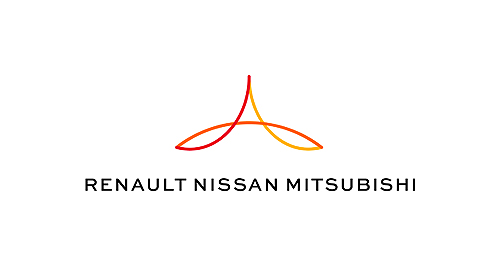Make / Model Search
News - NissanRenault-Nissan Alliance announces 2022 business planPlanning ahead: Alliance CEO Carlos Ghosn has announced the six-year plan for Renault, Nissan and Mitsubishi, with a focus on sharing technology and architecture. Alliance 2022 maps out six-year business plan for Nissan, Renault and Mitsubishi18 Sep 2017 THE Renault-Nissan Alliance has announced its ambitious Alliance 2022 business plan, with an aim to share more vehicles and powertrains across four architecture platforms, introduce 12 new all-electric models, and increase total vehicle sales and profits. Under the new plan, global sales of Nissan, Renault and Mitsubishi vehicles are expected to increase from less than 11 million units this year (based on half-yearly sales figures) to 14 million by 2022, including 500,000 yearly sales of fully electric vehicles. Revenues across this time are expected to increase to $US240 billion ($A299b), up 30 per cent on the $US180b ($A224b) figure achieved in 2016. Alliance members will also aim to increase annual synergies up to €10b ($A14.9b), up from €5b ($A7.45b) in 2016. To achieve this target the company will share vehicle platforms with Mitsubishi, combine manufacturing operations, expand their presence in mature and emerging markets and localisation of products. Additional synergies are expected to come from sharing light-commercial vehicles, technology-sharing in electric vehicles, autonomous drive, connected cars and new mobility services. Engine and platform sharing is one of the biggest elements of the Alliance 2022 plan, with an aim for member brands to share 22 engines out of 31 models, compared to 14 engines across 38 vehicles last year. By 2022, over nine million vehicles are planned to be built across four common platforms, compared to two million vehicles across two platforms last year. Renault-Nissan’s CMF architecture – which underpins the Nissan Qashqai and X-Trail and Renault Espace and Megane – will be extended to include a B-segment common platform for mid-sized vehicles and a new common EV platform with autonomous drive capability. The move towards shared platforms could mean a return to the passenger vehicle market for Mitsubishi, which has shifted its focus to SUVs in recent years. Mitsubishi, which will gain access to the new platforms and powertrains by 2020, has slimmed its passenger vehicle range to just two models – the ageing Lancer small car and the Mirage hatch – while discontinuing models such as the Mirage sedan, 380, Colt hatch and Grandis people-mover in the past decade, focusing instead on SUVs. Likewise, Nissan has also culled much of its passenger car range in Australia, to the point where its only current non-SUV offerings are sportscars – the 370Z and GT-R. The Pulsar, Altima and Micra have all been discontinued in recent times. The proliferation of electric vehicles across the alliance portfolio is a key element of the 2022 business plan, with a new family of EV motors and batteries to be introduced by 2020 and shared across alliance member products. Making EV powertrain technology more efficient and affordable has been earmarked as a plan goal, with an aim to increase EV range to more than 600km by 2022, as well as a 30 per cent reduction in battery cost from 2016 to 2022. Other EV advancements will include developing batteries that deliver 230km of driving range from 15 minutes of charge, better battery packaging, and the adoption of Mitsubishi’s PHEV technology for cars in the C and D segments. Autonomous technology is also on the radar, with plans to launch 40 vehicles with varying levels of autonomy by 2022. By next year the Alliance hopes to develop an autonomous vehicle for use on the highway with continuous driver monitoring, with a version for city driving arriving by 2020. Also landing before 2020 will be a highway vehicle with occasional human intervention, while by 2022 the first completely autonomous vehicle will be revealed. The Alliance is also working on connected vehicles and mobility services, including the launch of a cloud-based platform to manage all data interfaces, with the goal of providing a gateway for robo-vehicle services and self-driving delivery vehicles. Specific plans for Mitsubishi are expected to be announced during the release of its mid-term plan on October 18. Alliance CEO Carlos Ghosn said the new plan would help continue to grow the partnership, which now extended to three brands. “This plan will boost the growth and profitability of our member companies. We intend to deliver on growing synergies, with three autonomous companies cooperating with the efficiency of one,” he said. “The Alliance has grown and performed with two members since 1999. With Alliance 2022, we will prove that we will grow and perform with three companies or more.” Renault and Nissan have begun restructuring in Australia ahead of the Alliance 2022 plan, with Nissan Australia managing director Richard Emery and Renault Australia managing director Justin Hocevar both leaving their positions in recent weeks.  Read more12th of September 2017  Nissan Oz could double electric offeringsEV expansion to boost Nissan range globally and locally, Leaf SUV decided soon11th of September 2017  Renault Australia chief Hocevar departsRenault Australia to announce new MD following sudden departure of Justin Hocevar31st of August 2017  Nissan Australia chief departsInfiniti Canada chief to lead Nissan in Australia, NZ as Emery makes shock departure |
Click to shareNissan articlesResearch Nissan Motor industry news |











Facebook Twitter Instagram